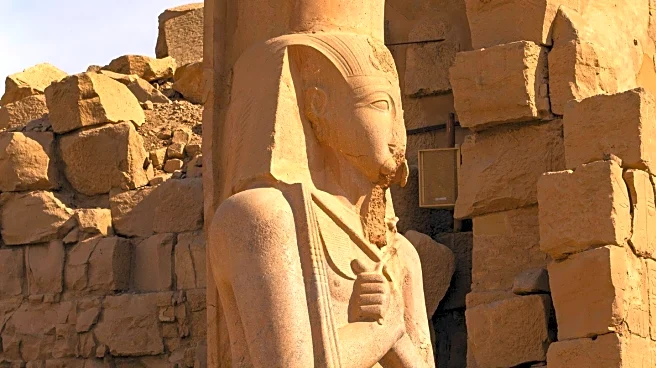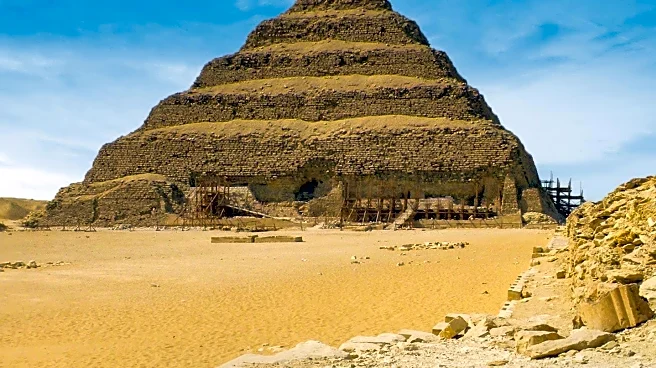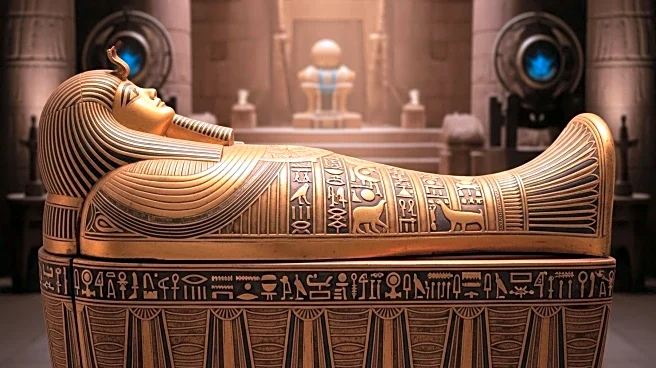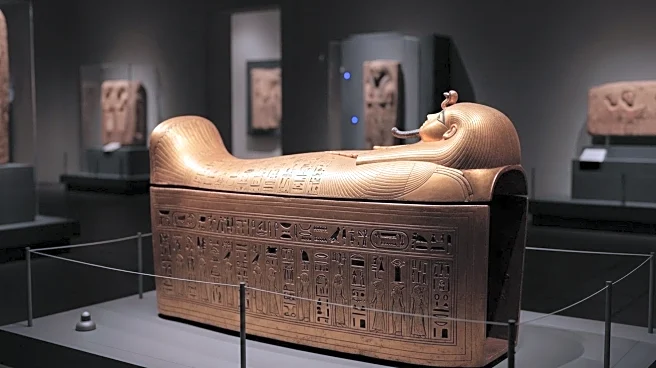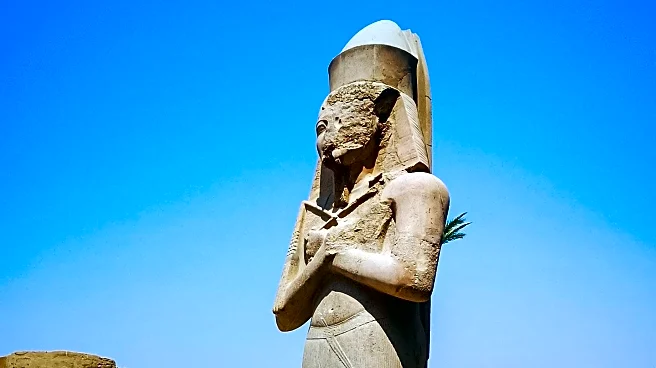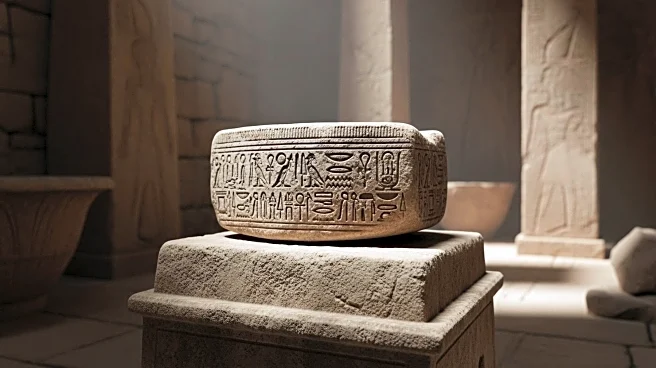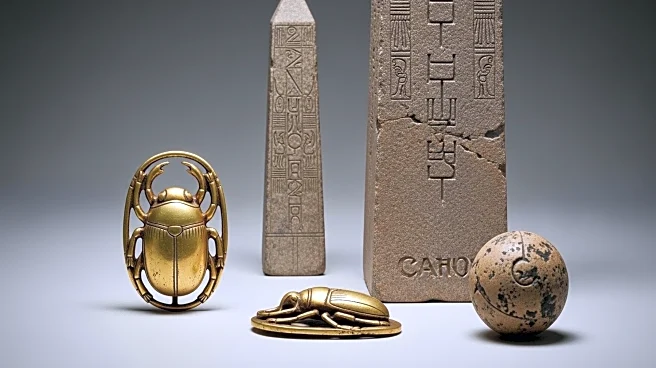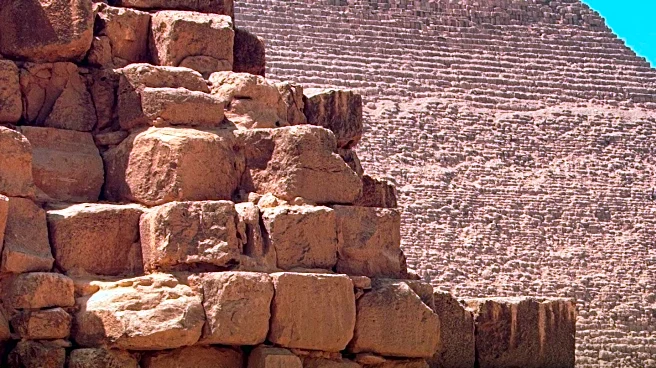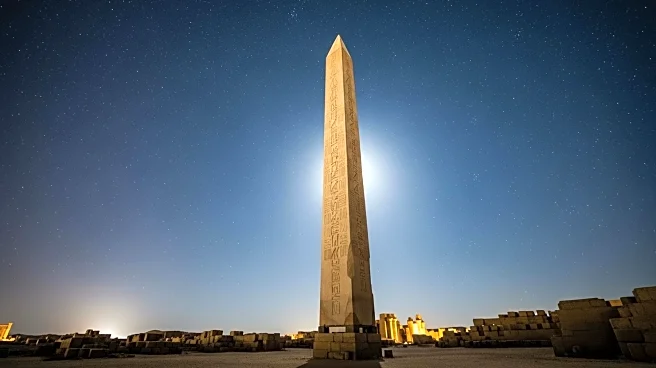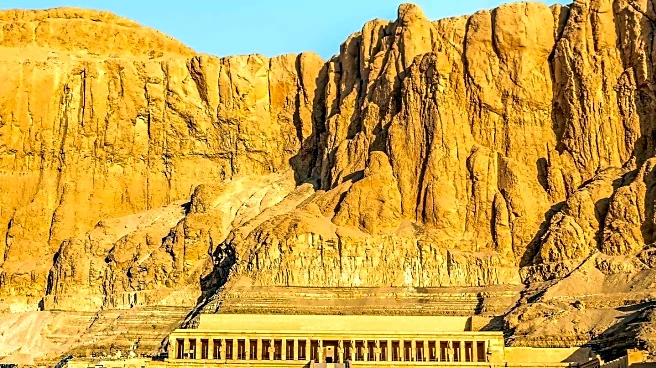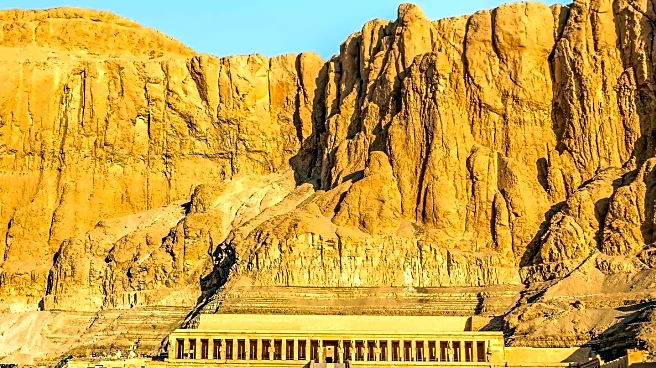What is the story about?
What's Happening?
A comprehensive geoarchaeological survey has provided new insights into the origins of the Karnak Temple in Egypt, suggesting it was inspired by a creation myth involving a primeval mound rising from watery chaos. The study, conducted by an international team, involved analyzing sediment cores and ceramic fragments to establish a timeline for the site's occupation. Findings indicate that the temple complex, located near Luxor, was initially unsuitable for permanent structures due to flooding from the Nile. The earliest occupation likely dates back to the Old Kingdom, around 2700 B.C.E. to 2200 B.C.E.
Why It's Important?
The discovery of the Karnak Temple's origins is significant for understanding ancient Egyptian religious and cultural practices. The connection between the temple's location and the creation myth highlights the interplay between natural landscapes and religious beliefs. This research enhances our knowledge of how ancient Egyptians selected and developed sacred sites, reflecting their interaction with the environment. The findings also contribute to the broader field of archaeology by providing a clearer timeline of the temple's development, offering insights into the historical context of one of Egypt's most important religious complexes.
What's Next?
The research may lead to further archaeological investigations at Karnak and other ancient sites to explore similar connections between mythology and site selection. Scholars may also examine how these findings influence our understanding of ancient Egyptian civilization and its development. The study could inspire new methodologies in geoarchaeology, encouraging interdisciplinary approaches to uncovering historical narratives. Additionally, the research may prompt discussions on preserving and interpreting ancient sites in light of new discoveries, ensuring their cultural and historical significance is recognized and protected.
AI Generated Content
Do you find this article useful?
